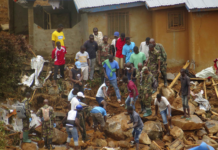Tom LaBelle Nov 24, 2012
When it comes to safety and ventilation the most important thing is coordination with the engine company. Too often the hand line brought to the fire is appropriate for the quantity of visible fire — but not smoke. Once ventilation occurs the amount of fire present is far beyond what the hand line can handle — and God help the engine team if they happen to be inside during this rapid introduction of air.
Smoke signals
Being able to read smoke and understand the impact oxygen will have on the event is a key tool for both the outside vent team as well as the engine team. I’ve seen really experienced engine officer know to stage their team just off the porch steps when horizontal ventilation occurs. This extra few feet back and below the front door allowed them to keep the line in play, rather than being driven out into the front yard.
In general, ventilation should occur as close to the seat of the fire as possible with the intent of drawing out the byproducts of both the fire itself and the fire suppression activities. When choosing the hole(s), we need to think about location of victims, firefighters and the fire.
Building use and type of construction will influence the ventilation profile. Another influencing factor is what stage the fire is in and what will happen when additional oxygen is introduced. Again, the key is where the fire goes after the hole is open not where the fire is now.
Mitch: I hadn’t previously grasped the importance of the coordination of the various elements/teams used in most firefighting strategies. The engine team goes in to assess and begin suppressing the fire while the ladder team begins ventilating and exterior suppression. If this is not done in concert with the engine team the ventilation could add oxygen and fuel a fire that would then backdraft and put the engine crew and any civilians inside in greater danger. The need for careful and strategic entry and ventilation has really been driven home, and the tools that the engine crew is able to carry in with them might be all they have if ventilation efforts fail and the fire cuts them off. Additionally the level of strategy and tactics involved with this coordination was previously lost on me. The need to search for and address fire extensions hidden in ceilings and walls as well as the dangers of flash overs and blowback based on oxygen levels and air pressure; these are very involved topics!



